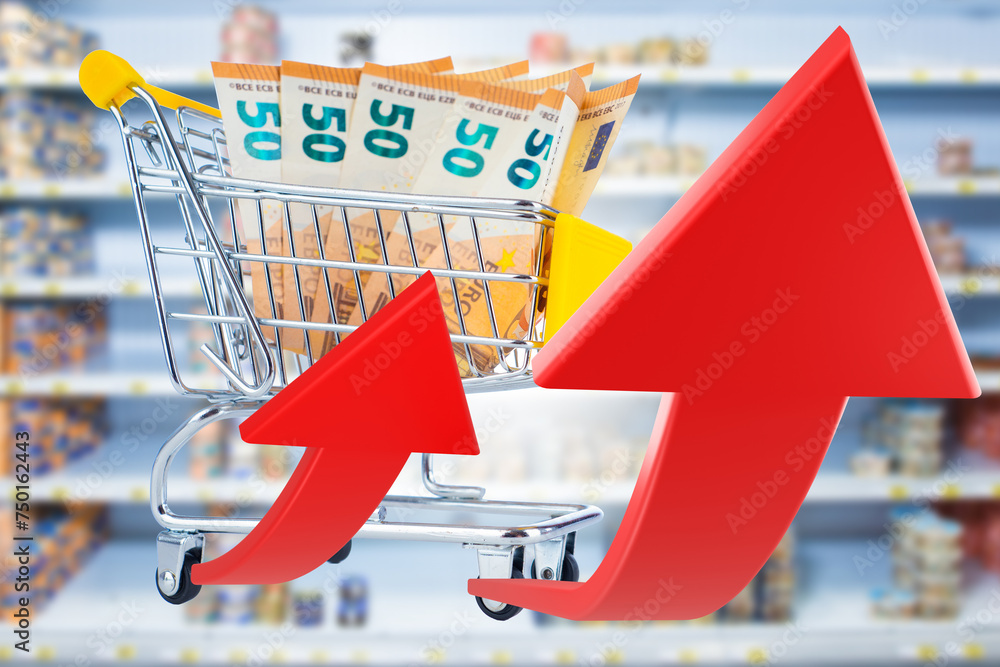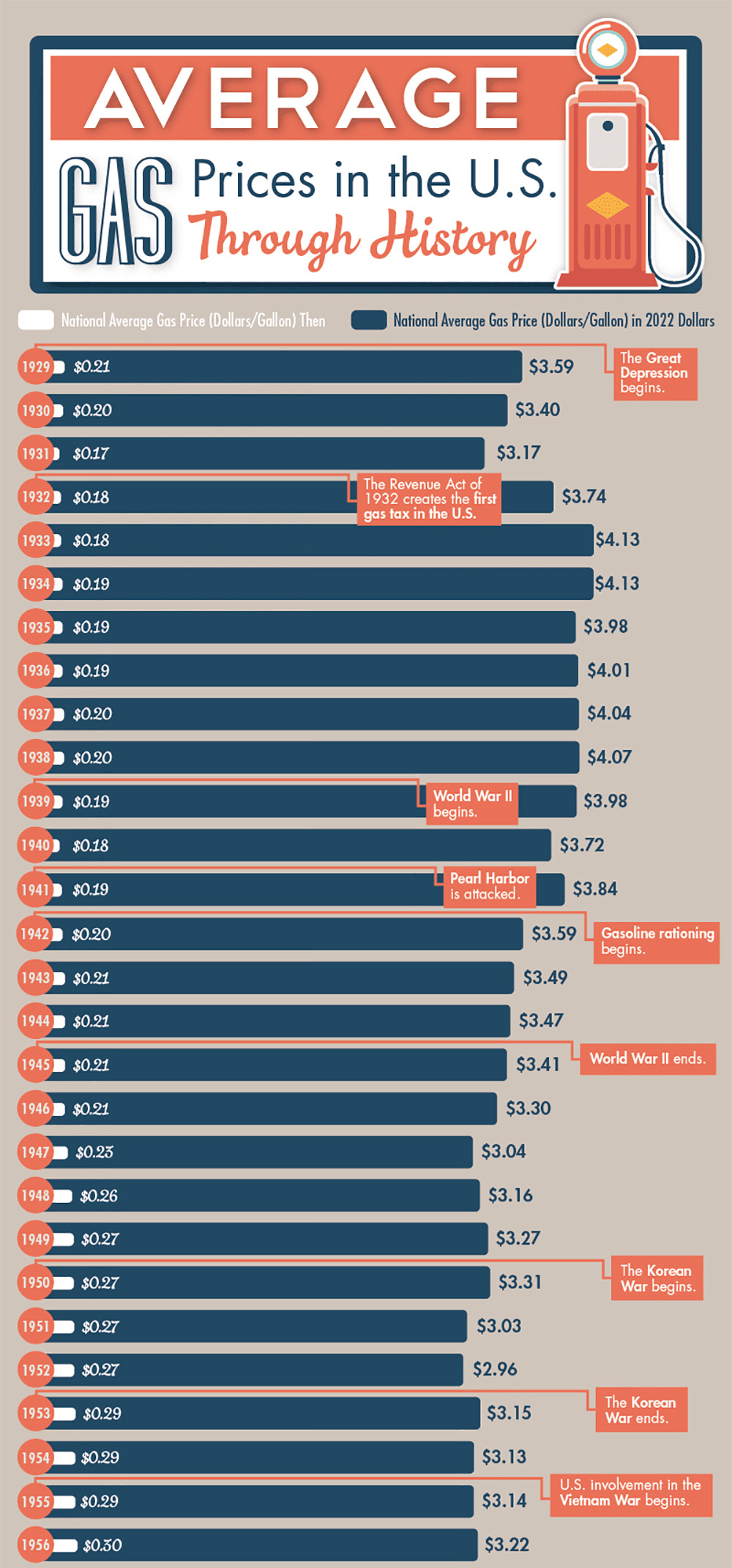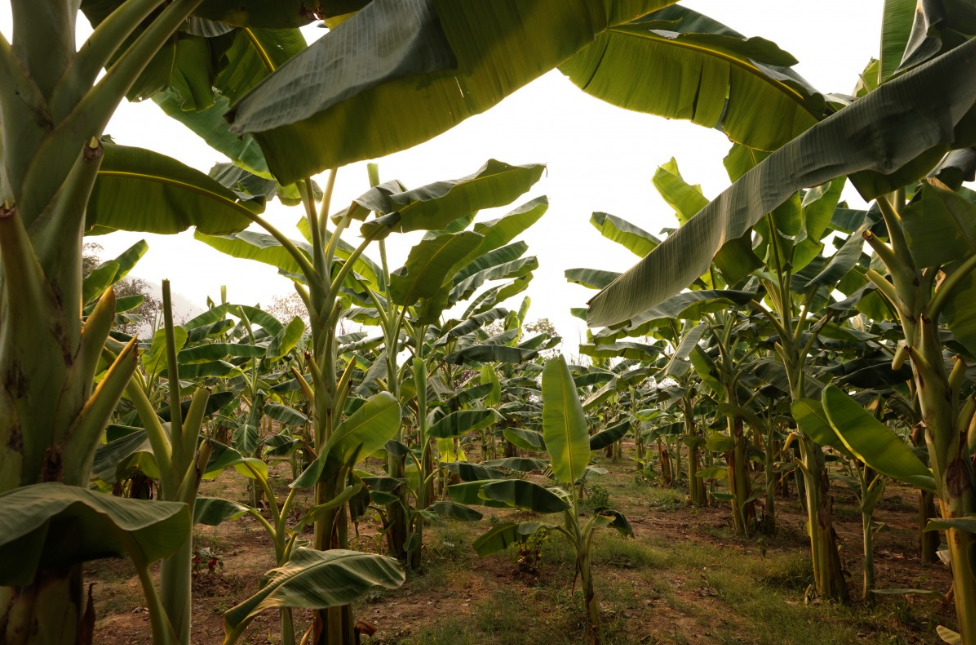Grocery Bills Surge: Inflationary Impact On Food Costs

Table of Contents
Understanding the Inflationary Pressure on Food Prices
The dramatic increase in grocery bills isn't just a feeling; it's a reflection of significant inflationary pressures on food prices. Several key factors are at play:
Global Supply Chain Disruptions
Global events have significantly disrupted food production and distribution networks, leading to shortages and price increases.
- The War in Ukraine: The conflict has severely impacted wheat and sunflower oil exports, causing global prices to soar. Ukraine and Russia are major exporters of these commodities, and the disruption has cascaded through the global food system.
- Climate Change: Extreme weather events, such as droughts and floods, have devastated crops in various regions, reducing yields and driving up prices. This is particularly evident in the rising cost of fruits and vegetables.
- COVID-19 Pandemic: The pandemic exposed vulnerabilities in global supply chains, leading to factory closures, transportation delays, and labor shortages, all impacting food production and delivery.
Increased Energy Costs
Rising energy prices are a significant driver of inflation in the food sector. From farming to transportation and processing, energy is crucial at every stage.
- Fuel Costs: Higher fuel prices directly impact the cost of transporting food from farms to processing plants and ultimately to grocery stores. This increased transportation cost is directly passed on to consumers, increasing grocery bills.
- Fertilizer Production: The production of fertilizers is energy-intensive, so increased energy costs translate to higher fertilizer prices, directly impacting crop yields and food prices.
- Food Processing: Energy is critical for food processing and packaging, and the rising cost of electricity and gas is reflected in the final price of many food items.
Labor Shortages and Wage Increases
Labor shortages across the agricultural and food processing sectors have led to increased wages, contributing to higher food costs.
- Increased Wages: To attract and retain workers, companies are increasing wages, adding to the overall cost of production and ultimately increasing grocery bills.
- Reduced Productivity: Labor shortages can also lead to reduced productivity and output, contributing to higher prices due to lower supply.
- Automation Costs: Some companies are investing in automation to combat labor shortages; however, the upfront costs of automation also contribute to increased food prices.
Strategies for Managing Rising Grocery Bills
While inflation impacts everyone, there are strategies to mitigate the effect on your grocery bills.
Budget-Friendly Shopping Techniques
Taking control of your grocery spending requires a proactive approach:
- Meal Planning: Plan your meals for the week to avoid impulse purchases and reduce food waste.
- Couponing and Deals: Use coupons, loyalty programs, and store apps to find discounts and deals.
- Buy in Bulk (Wisely): Only buy in bulk for items you frequently use and that won't spoil.
- Compare Prices: Compare prices between different stores and brands to find the best deals.
- Cook at Home More Often: Eating out less significantly reduces your food expenses.
- Reduce Food Waste: Properly store food to extend its shelf life and minimize spoilage.
Smart Food Choices and Substitutions
Making smart food choices can save you money without compromising nutrition:
- Seasonal Produce: Buy fruits and vegetables that are in season; they're usually cheaper and tastier.
- Generic Brands: Often, generic brands offer the same quality as name brands at a lower price.
- Less Processed Foods: Processed foods are often more expensive; choose whole, unprocessed foods whenever possible.
- Smart Substitutions: Substitute expensive ingredients with cheaper alternatives; for example, lentils instead of meat.
Utilizing Government Assistance Programs
Several government programs are designed to help low-income families afford groceries:
- Supplemental Nutrition Assistance Program (SNAP): SNAP provides food assistance benefits to eligible individuals and families.
- Special Supplemental Nutrition Program for Women, Infants, and Children (WIC): WIC provides food assistance for pregnant women, new mothers, and young children. You can find more information and applications for these programs on the relevant government websites.
The Long-Term Outlook for Grocery Prices
Predicting future grocery prices is challenging, but several factors suggest continued pressure on food costs.
Predicting Future Trends
Several factors could influence future food prices:
- Climate Change Impacts: The increasing frequency and intensity of extreme weather events will likely continue to disrupt food production.
- Geopolitical Instability: Ongoing conflicts and political instability can lead to supply chain disruptions and price increases.
- Population Growth: A growing global population will increase demand for food, potentially putting further pressure on prices.
The Role of Government Policy
Government policies can play a vital role in stabilizing food prices:
- Agricultural Subsidies: Government subsidies can help farmers cope with rising costs and maintain production.
- Trade Agreements: Fair and equitable trade agreements can ensure a stable supply of food.
- Investing in Sustainable Agriculture: Investing in sustainable agricultural practices can improve resilience to climate change and ensure long-term food security.
Conclusion
The surge in grocery bills reflects significant inflationary pressures on food costs, driven by global supply chain disruptions, increased energy costs, and labor shortages. By understanding these factors and implementing smart shopping strategies like meal planning, utilizing coupons, and choosing affordable alternatives, you can effectively manage rising grocery expenses. By actively reducing food waste and exploring government assistance programs if needed, you can better navigate the challenges of inflation's impact on groceries and ensure your family's nutritional needs are met. Take control of your food budget and start implementing these strategies today to alleviate the pressure of rising grocery bills and effectively manage your food costs.

Featured Posts
-
 Louth Food Heros Entrepreneurial Journey Inspiring Others
May 22, 2025
Louth Food Heros Entrepreneurial Journey Inspiring Others
May 22, 2025 -
 Sejarah Kemenangan Liverpool Di Liga Inggris Peran Para Pelatihnya
May 22, 2025
Sejarah Kemenangan Liverpool Di Liga Inggris Peran Para Pelatihnya
May 22, 2025 -
 Dealers Double Down Fighting Back Against Ev Mandates
May 22, 2025
Dealers Double Down Fighting Back Against Ev Mandates
May 22, 2025 -
 Extensive Damage York County Pa House Lost In Two Alarm Blaze
May 22, 2025
Extensive Damage York County Pa House Lost In Two Alarm Blaze
May 22, 2025 -
 The Risky Business Of Ceo Relationships A Case Study
May 22, 2025
The Risky Business Of Ceo Relationships A Case Study
May 22, 2025
Latest Posts
-
 Toledo Gas Prices Drop A Look At The Current Market
May 22, 2025
Toledo Gas Prices Drop A Look At The Current Market
May 22, 2025 -
 Year Over Year Gas Price Drop In Virginia 50 Cents Less
May 22, 2025
Year Over Year Gas Price Drop In Virginia 50 Cents Less
May 22, 2025 -
 Wordle Hints Answer And Help For March 7th 1357
May 22, 2025
Wordle Hints Answer And Help For March 7th 1357
May 22, 2025 -
 Fuel Costs Rise A 20 Cent Increase In Average Gas Prices
May 22, 2025
Fuel Costs Rise A 20 Cent Increase In Average Gas Prices
May 22, 2025 -
 Soaring Gas Prices A Look At Akron And Clevelands Recent Fuel Costs Gas Buddy Analysis
May 22, 2025
Soaring Gas Prices A Look At Akron And Clevelands Recent Fuel Costs Gas Buddy Analysis
May 22, 2025
